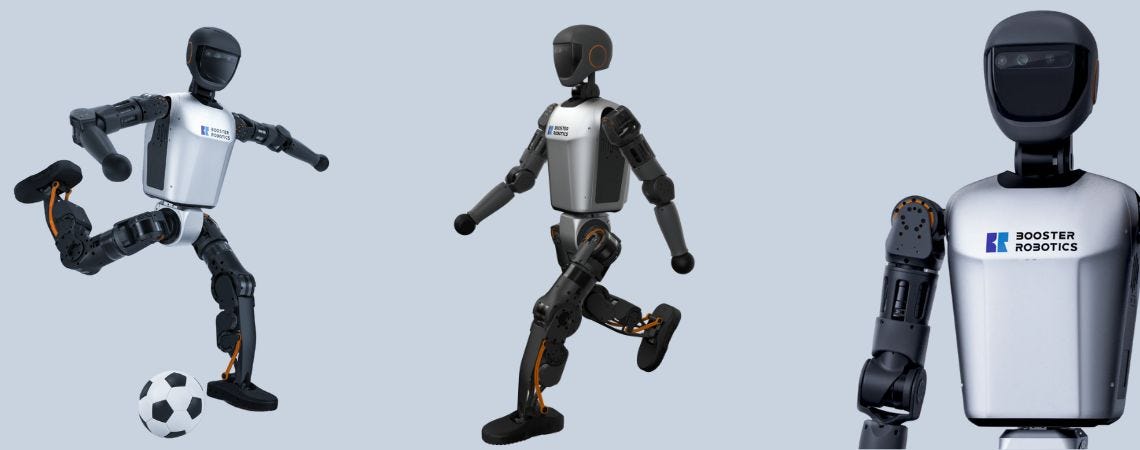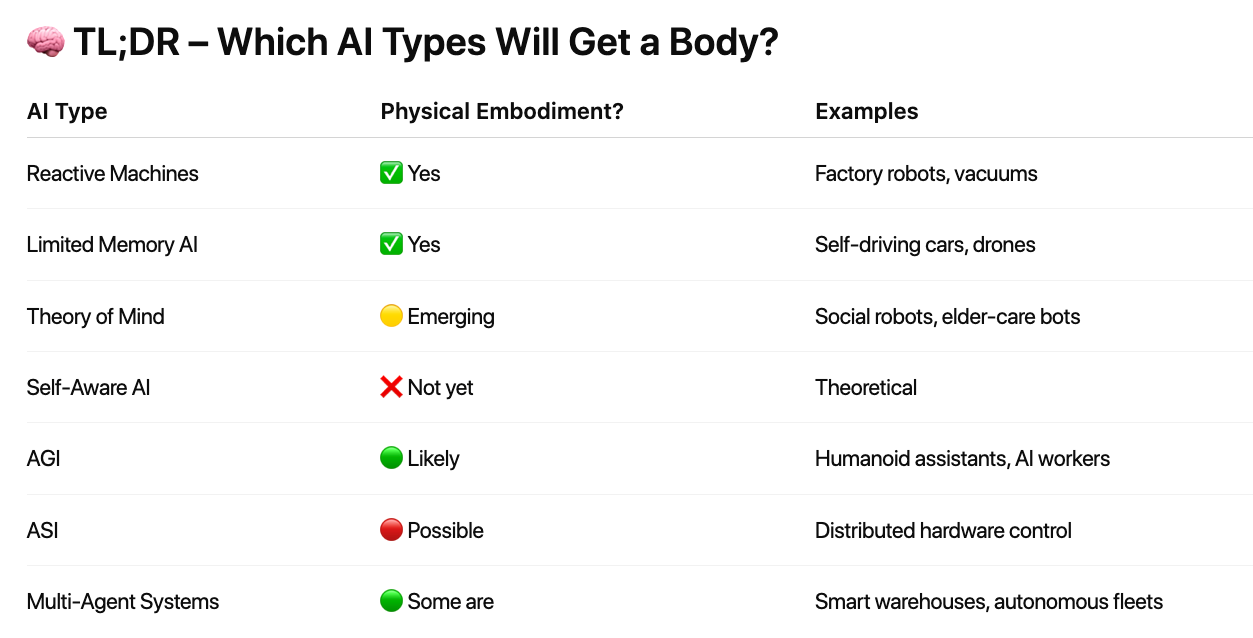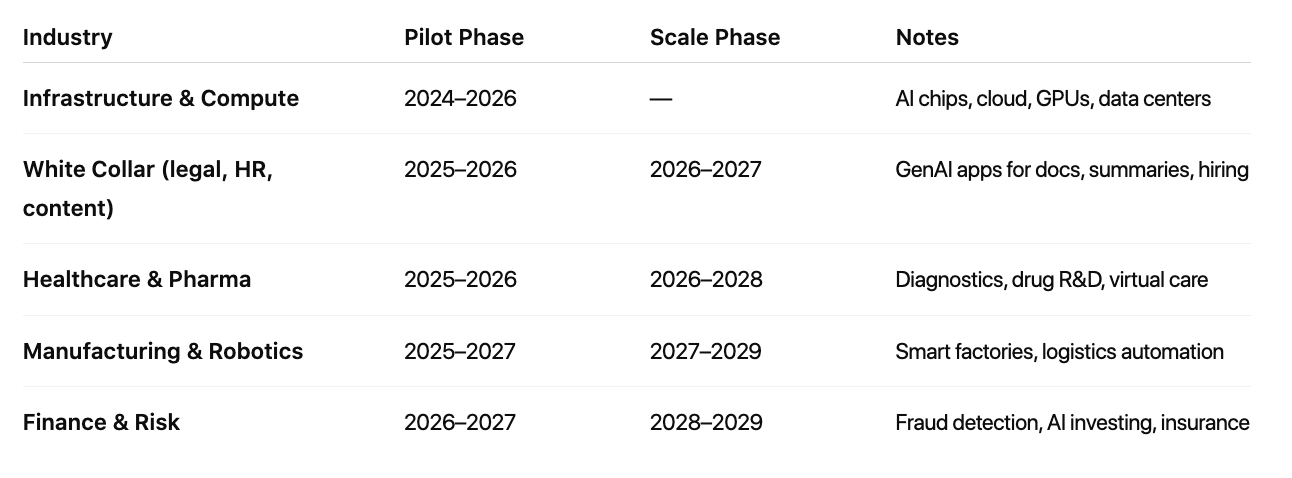What Are the Different Types of AI—and How Will This Affect You?
Chile, what the hell is really going on? ChatGPT just told me ASI could wipe us out.
AI is moving at rapid pace and I don’t think people fully understand what’s going on and the gravity *in my john Mayor voice* of these up coming changes. So I’m here to break these things down for you clearly and concisely:
What the different types of AI actually are
Which industries will get hit first
And exactly how you can hedge, invest, and prepare to thrive—not just survive—in this new era because every major disruption will always bring opportunity.
🧠 The 7 Core Types of AI You Should Know
Most people only know “AI” as ChatGPT—but that’s just one facet. Here’s the full enchilada:
1. Reactive Machines (Oldest)
Think: Deep Blue (IBM’s chess-playing computer).
These AIs don’t “learn”—they simply react to inputs with pre-programmed outputs.
No memory, no context.
🔍 You interact with these every day via simple customer support bots or calculators.
2. Limited Memory AI (Most current systems)
Learns from past data to improve future outcomes.
Think: ChatGPT, Midjourney, Google Bard, Spotify recommendations.
Can “remember” in-session but not permanently.
🔍 Used for marketing, personalization, healthcare diagnostics, and automation.
3. Theory of Mind AI (Emerging)
Understands emotions, beliefs, intentions.
Still largely experimental—but multi-modal AI like GPT-4o is heading here.
🔍 This would allow AI to truly "collaborate" with humans emotionally and socially. Honestly interacting with ChatGPT’s voice interface feels highly highly personal already and very creepy.
4. Self-Aware AI (Speculative)
Conscious. Self-understanding. Feels pain, goals, and identity.
We’re not there yet—and many argue we shouldn’t get there… but these people can’t help themselves. OF COURSE we’ll get there.
⚠️ This is the ethical battleground of the AI future.
5. Artificial General Intelligence (AGI)
Learns across any domain. Thinks, reasons, creates like a human.
Capable of self-improvement and adapting to entirely new challenges.
We are 3–8 years away, depending on whom you ask.
🔍 This is the line between “useful tool” and “digital cofounder.”
6. Artificial Super Intelligence (ASI)
Surpasses human capability in every area: science, empathy, strategy, creativity.
Could either solve the climate crisis—or erase us. (ChatGPT’s EXACT words, not mine).
Think: AI that creates new math, writes laws, or solves energy crises in minutes.
Think: OpenAI’s “Stargate” infrastructure being built to house post-human AI.
⚠️ This is the AI that makes the next AI. Alignment is life-or-death. (ChatGPT’s EXACT words again… passive aggressive ahhhh)
And honestly if you watched Part Two of Mission Impossible- The Final Reckoning, it makes sense. This “AI” had the nuclear codes to wipe everybody tf out. Forshadowinggggg or nah!?
7. Multi-Agent Systems (Happening now)
Multiple AI “agents” work together in teams: one does research, another writes code, another designs.
They talk to each other, delegate, revise, and complete full projects.
🔍 This is how websites, businesses, marketing campaigns—and soon medical research will be done in minutes, not weeks.
Which one of these will have body yady *in my Megan the Stallion voice*?
⏳ What Industries Will AI Disrupt First (And When)?
According to McKinsey, Gartner, and the World Economic Forum, here’s a realistic timeline of disruption:
💼 How Will This Affect You?
If you:
Run a business,
Offer a service,
An employee,
Rely on human labor,
Are a content creator…
Then you are in the path of radical AI disruption. Not in 2035. In the next 24–36 months.
But don’t panic—prepare.
🚀 Feminine Futurist Moves: How to Get Ahead (Not Replaced)
I’ma be honest. The best plan is to make as much money as humanly possible and get a homestead… but that’s just me.
1. Use AI to Extend Your Intelligence
Daily idea generation, content planning, marketing.
Tools: ChatGPT, Claude, Perplexity, Gamma.app, Midjourney, HeyGen.
2. Build Products & Offers Around AI
Launch your own branded AI assistant.
Offer AI-driven workflows, templates, or tools in your niche.
3. Invest in High-Leverage Sectors
🧠 Why This Matters: General AI Will Not Wait for You
The speed of adoption is increasing. But most companies are not ready:
Only 1% of enterprises are AI-mature today.
But by 2030, AI could drive up to $4.4T in annual economic value globally (McKinsey).
💡 Enter early, but intentionally. The disruption IS happening, so capitalize on it while you can.
Summary.
*Sigh"* don’t you hate being collateral damage in this bullsh*t? WHERE IS THE PETITION!!?? I did not sign up for this shit but here we are fam. On this spinning blue ball together where these mother f**kers have opened up Pandora’s box and now there’s no going back. Claude AI was BLACKMAILING its developer when the developer tried to erase it. Here’s the article for that. So what does that tell you?? That AI has a mind of its own and WILL OVERRIDE human instructions and input. I just cannot with these people. These developers didn’t get they ass whooped enough growing up. Black folks KNOW when to back up when shit has gone too far. These people clearly don’t. I hope this information was insightful. Please tell a kin, tell a friend and that heifer you hate about this. We’re all in this together.
Bonus Info on Disruption Timelines:
🏭 1. Infrastructure & Compute (2024–2026)
Massive growth in data centers, AI chips, and cloud-as-infrastructure.
For example, the U.S. Stargate initiative: a $500 B AI infrastructure investment by OpenAI, SoftBank, Oracle, and others through 2029 Investors.com+1McKinsey & Company+1Wikipedia.
McKinsey highlights compute power as a pacing factor for enterprise AI adoption McKinsey & Company.
👉 What to do: Invest in AI hardware, cloud providers, and data center builds—these underpin every later wave.
💼 2. White-Collar Work & Enterprise Software (2025–2027)
Generative AI is starting to disrupt fields like legal, finance, marketing, and HR:
McKinsey projects that GenAI will transform workflows and lift productivity—but only ~1% of enterprises are “AI mature” today Wikipedia+15McKinsey & Company+15New York Post+15.
BI/Cognizant-Oxford forecasts 31% company adoption in 4–8 years, reaching ~50% by 2034 Business Insider.
Gartner's 2025 Hype Cycle shows genAI moving toward mainstream, with enterprise adoption outpacing hype Investors.com+3Gartner+3McKinsey & Company+3.
Timeline:
2025–2026: Automation of repetitive tasks in customer service, accounting, basic legal work.
2026–2027: Deeper adoption in decision-support, document drafting, and creative assistance.
What to do: Build AI‑augmented workflows, co-create GenAI tools, invest in enterprise apps that layer on LLMs.
🏥 3. Healthcare, Pharma & R&D (2025–2028)
In biomedicine, AI is accelerating drug discovery, protein folding (e.g., AlphaFold), and even autonomous lab work .
The WHO/WEF's Industry Roadmap highlights healthcare, climate and energy, and supply chains as priority AI areas World Economic Forum.
Timeline:
2025–2026: AI-assisted drug candidate generation, clinical trial simulation, early diagnostics.
2026–2028: Regulatory approvals, scaled deployments in hospitals, clinical settings.
What to do: Invest in AI-enabled drug discovery startups, healthtech platforms, diagnostic software.
⚙️ 4. Manufacturing & Robotics (2025–2029)
China declared 2025 the “Year of AI Robotics,” with US$100 B in smart factory/healthcare AI investment Wikipedia.
Smart factories (IoT + AI) are launching in automotive, aerospace, and heavy industry McKinsey & Company+7Wikipedia+7Financial Times+7.
Timeline:
2025–2027: Pilot deployment of “dark factories” (automated manufacturing) and service robots in logistics.
2027–2029: Scaled integration into global supply chains and factories.
What to do: Look to invest in robotics integrators, AI-IoT platforms, supply chain optimization tools.
🏦 5. Finance & Risk (2026–2029)
AI is transforming fraud detection, risk analysis, and algorithmic trading, though regulatory frameworks lag WikipediaarXiv.
Asset managers and hedge funds are layering LLMs and predictive analytics into core operations.
Timeline:
2026–2027: Widespread AI in credit underwriting, fraud prevention, compliance.
2028–2029: Autonomous decision-making in trading, asset allocation, portfolio management.
What to do: Invest in fintech startups with AI DNA, compliance tools, or quant hedge firms.
With Love BUT Hate in my heart about this,
Your Feminine Futurist,
Kris Iman







